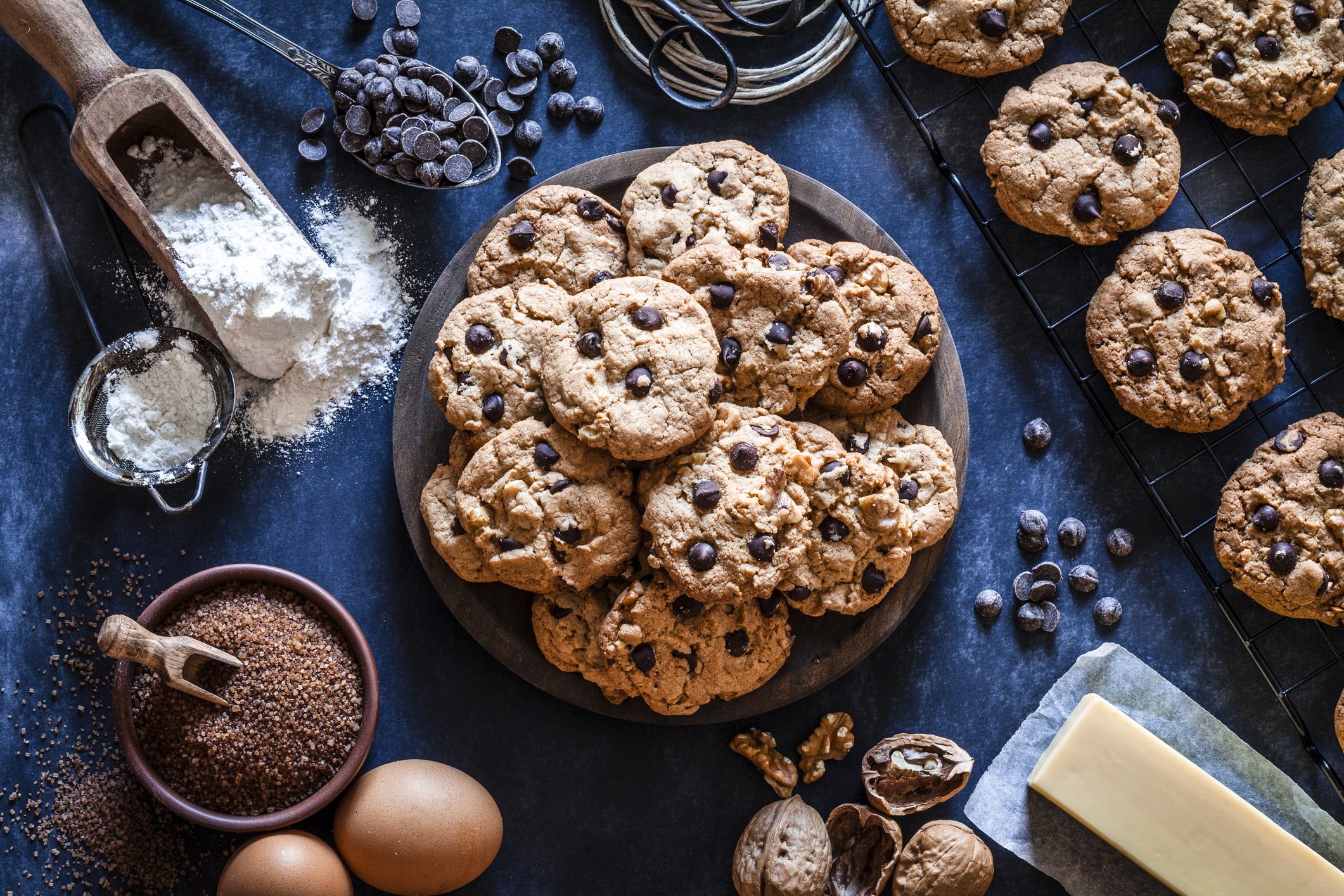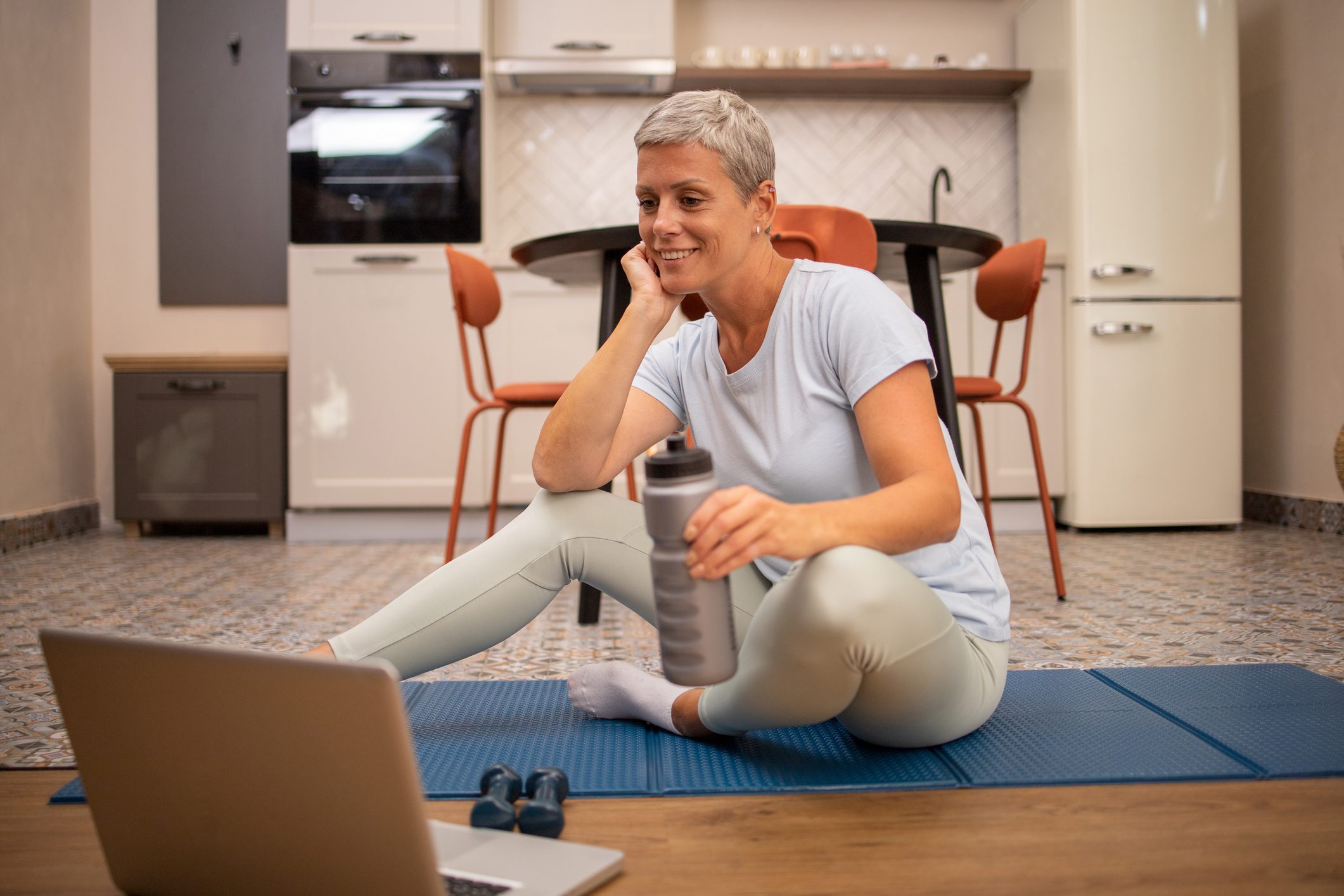We’re all getting older every day. And while I consider aging a giant privilege, that doesn’t mean I want you to have to live with the potential negative side effects!
Just like there are lifestyle strategies you can deploy to make aging easier like exercising and not smoking, there are also foods that can decelerate the aging process. The last thing you want, as you’re trying to maintain your vitality and longevity, is to speed up time.
It’s not always obvious when foods are aging you. Maybe you notice physical signs that your body isn’t as young as it used to be, but you might not immediately chalk that up to your diet. Other aging symptoms lurk beneath the surface, leading to silent but harmful chronic conditions like inflammation and high blood pressure.
The Worst Foods for Aging
That’s exactly why I want to share more information about the worst foods for aging—to help you spot them before they unknowingly cause you harm. Let’s dive into the worst offenders:
1. Sugar
I’m sure I’m not the first person to break this news—there just isn’t anything redeeming about a diet high in sugar, especially as you age.
There are a few different ways sugar works against your body to exacerbate the symptoms and physical signs of aging.
- It can create insulin resistance. After your body breaks down sugar into glucose and fructose, insulin delivers glucose to your cells to give you energy. But with a diet too high in sugar, your body starts to become resistant to the onslaught of insulin, or a condition known as insulin resistance.1 It will try to make enough insulin to overcome your body’s resistant response to the insulin it already has, which can lead to conditions like type 2 diabetes and cardiovascular disease—neither of which help the aging process.
- It can cause inflammation. Eating excess sugar can cause or exacerbate inflammation so much so that the researchers of one study called sugar inflammation’s “accomplice.”2 And inflammation and aging are so tied together that researcher Claudio Franceschi coined the term “inflammaging,” referring to the low-grade inflammation that contributes to the negative effects of aging you might feel.3 Over time, inflammation can lead to conditions that prematurely age you, including Alzheimer’s, type 2 diabetes, some types of cancers, and cardiovascular disease.
- It makes your skin worse. Along with causing internal chronic conditions, both inflammation and insulin resistance can lead to signs of aging in the skin. Insulin resistance can increase sebum production in your skin, which can lead to clogged pores, adult acne, and other skin damage.4 And inflammation is guilty, too. In one study, scientists determined that the common denominator in external signs of aging was inflammation. In fact, they were so convinced, instead of recommending expensive skincare to treat wrinkles, they instead suggested treating the root cause: chronic inflammation!5
- It really AGEs you. Eating a diet high in sugar is a fast way for your body to form advanced glycation end products, otherwise very appropriately known as AGEs.6 Along with increasing inflammation, these harmful compounds can maximize oxidative stress, which is what happens when damaging free radicals overpower your body’s defense system. Over time, that oxidative stress puts too much pressure on your cells, breaking them down to the point where they’re losing collagen and elastin (hello, wrinkles!). Oxidative stress has even been found to contribute to more serious premature aging conditions, including neurogenerative disease and diabetes.7
Even if you’re not experiencing oxidative stress, your body IS losing collagen every day as you get older. I use Collagen Peptides Powder to counteract that loss. I blend it in my smoothie, stir it in my coffee, even add it to baking recipes! It’s so easy to incorporate, and important for your bone, skin, and overall health—especially after 40. Get yours today!*
And remember—just because you’re not washing down donuts with milkshakes doesn’t mean you’re not taking in a lot of sugar. Sugar is sneaky, lurking in products where you least expect it or that have been sold to you as healthy alternatives.
I’ve got a whole inventory of the sneakiest sugars in my book, Sugar Impact Diet. You might be surprised to learn foods like packaged green juice, non-fat plain yogurt, baked beans, balsamic vinegar, whole-grain cereal, and tortillas all make the list.
Check out the Sneaky Sugar Inventory and see how many you’ve had in the last month, and then make some healthy swaps!
2. Inflammatory Foods
The gut is the epicenter of aging. Keep it healthy, and you can live longer,8 improve cognitive function,9 and better absorb the nutrients that keep you feeling young.10
But fuel it with inflammatory foods, and you’re practically begging the hands of time to leave their mark.
Inflammatory foods can look a little different for everyone, but I’ve identified the seven ingredients that most commonly disrupt your gut. They are:
- Gluten
- Dairy
- Soy
- Eggs
- Corn
- Peanuts
- Sugar & artificial sweeteners
These can all lead to increased inflammation, bringing on the negative effects of aging. Finding simple healthy swaps is the smartest way to start turning back the clock.
Not sure which of these ingredients takes a toll on YOUR gut? Then it’s time to try my 21-Day Breakthrough Intolerance Cleanse. In just three weeks of an easy eating program, you’ll uncover the foods that make you feel great, reduce inflammation, and look younger than ever—and give a final kiss goodbye to the ingredients prematurely aging you. You can get started today.*
3. Foods Cooked on High Heat
Remember AGEs, the compounds that lead to prematurely-aging oxidative stress? They’re not only found in sugar. They also occur when you cook meat at high temperatures.
For example: a broiled steak has 7,479 ku of AGEs, but that number jumps to 10,058 if you pan-fry it.
I’m not saying you have to ditch your grill or only eat raw foods. But it’s a good thing to be mindful of, especially if you’re following a diet like the Keto diet that’s heavy on grilled or fried proteins.
There are a few ways to get AGEs content down even if you do use high heat occasionally. Try using acidic marinades like lemon juice or vinegar, as they help lower AGEs (and can add great flavor, too!). For example, ground beef browned in a pan has 4,928 ku of AGEs, but if you marinate that same meat and cook it the same way, the AGEs drop to 3,833.11
You can also experiment with fun new recipes in the kitchen. Cooking meat slowly at low temperatures—like with my Crockpot Chicken & Cauliflower Rice Stew or my Healthy Slow Cooker Lemon Thyme Chicken can yield some low-AGEs and delicious meals!
4. Refined Carbs
When you eat tons of refined carbs like white bread and pasta, french fries, bagels, or waffles, you’re getting ingredients with a high glycemic load, which is linked to inflammation and all the aging issues that come with it.12
Plus, when refined carbs mix with protein, they can form—you guessed it—AGEs.11
Not to mention, these are foods typically high in gluten, another big gut no-no from me.
Thankfully, there are tons of healthy swaps available for these refined carbs. Some of my favorites are:
- Zucchini noodles
- Cassava flour tortillas
- Organic quinoa pasta
- Sweet potatoes or portobello mushrooms as toast
- Seed crackers
- Gluten free pancakes or waffles
The Best Foods for Aging
I know what you might be thinking. “Is there anything I can eat without making this whole aging thing worse?”
I’ve got good news. There are tons of foods that make the aging process smoother and easier for your body, helping you step powerfully into the prime of your life. I’ve written guides to the foods that give you glowing skin, help you tackle menopause symptoms, keep your gut young and healthy, and work as anti-aging agents for your body inside and out.
You can dive into those posts and the above video for more details. But let’s look at a couple of my favorite ingredients for aging powerfully:
B vitamins: There are several different types of B vitamins, all of which can be beneficial for you as you age. The vitamin biotin, for example, supports your skin, hair, and nail health as they become drier, more brittle, or dull as you age.13 Vitamin B6 is another multi-tasking nutrient, working to improve both brain health and mood.14 Other B vitamins work to stabilize your blood-sugar levels, lowering your risk of chronic inflammation and cravings.
You can get all the B vitamins you need in one simple supplement: B-Complete. Designed to balance hormones, boost your immune system, and maintain your blood sugar levels, it’s got all the B you need to feel A+ Get yours now.
Protein: This is a multi-tasker that attacks aging in different ways. It helps you rebuild the muscle mass you lose every decade starting in your 30s and stabilizes blood-sugar levels to stave off premature aging conditions like type 2 diabetes. I recommend getting 100 grams per day, or more if you’re recovering from an illness or injury.
No idea how much protein you’re getting in a day? You’re not alone. That’s why I created a FREE 7-Day Eat Protein First Challenge. I’ll show you just how easy it is to eat more protein, and you’ll realize how much more satisfied, vibrant, and energetic you feel in just one week. Start your transformation now.
Aging Powerfully
Aging happens to us all, but there are easy steps we can take to mitigate the negative effects of it. Now that you know more about the foods that accelerate the aging process, you’ll be better equipped to make the smart decisions that make you feel young.
There is beauty and power in every age we’re lucky enough to live! And the more you pay attention to your diet choices, the more you can embrace that power, elevate your quality of life, and enjoy everything that age has to offer.
*These statements have not been evaluated by the Food & Drug Administration. Products mentioned are not intended to diagnose, treat, cure, or prevent any disease. The views in this blog by JJ Virgin should never be used as a substitute for professional medical advice. Please work with a healthcare practitioner concerning any medical problem or concern.
Sources:
- Softic, S., Stanhope, K. L., Boucher, J., Divanovic, S., Lanaspa, M. A., Johnson, R. J., & Kahn, C. R. (2020). Fructose and hepatic insulin resistance. Critical reviews in clinical laboratory sciences, 57(5), 308–322. https://doi.org/10.1080/10408363.2019.1711360
- Ma, X., Nan, F., Liang, H., Shu, P., Fan, X., Song, X., Hou, Y., & Zhang, D. (2022). Excessive intake of sugar: An accomplice of inflammation. Frontiers in immunology, 13, 988481. https://doi.org/10.3389/fimmu.2022.988481
- Franceschi, C., Bonafè, M., Valensin, S., Olivieri, F., De Luca, M., Ottaviani, E., & De Benedictis, G. (2000). Inflamm-aging. An evolutionary perspective on immunosenescence. Annals of the New York Academy of Sciences, 908, 244–254. https://doi.org/10.1111/j.1749-6632.2000.tb06651.x
- Sadowska-Przytocka, A., Gruszczyńska, M., Ostałowska, A., Antosik, P., Czarnecka-Operacz, M., Adamski, Z., & Łącka, K. (2022). Insulin resistance in the course of acne – literature review. Postepy dermatologii i alergologii, 39(2), 231–238. https://doi.org/10.5114/ada.2021.107101
- Thornfeldt C. R. (2008). Chronic inflammation is etiology of extrinsic aging. Journal of cosmetic dermatology, 7(1), 78–82. https://doi.org/10.1111/j.1473-2165.2008.00366.x
- Aragno, M., & Mastrocola, R. (2017). Dietary Sugars and Endogenous Formation of Advanced Glycation Endproducts: Emerging Mechanisms of Disease. Nutrients, 9(4), 385. https://doi.org/10.3390/nu9040385
- Preiser J. C. (2012). Oxidative stress. JPEN. Journal of parenteral and enteral nutrition, 36(2), 147–154. https://doi.org/10.1177/0148607111434963
- Wilmanski, T., Diener, C., Rappaport, N., Patwardhan, S., Wiedrick, J., Lapidus, J., Earls, J. C., Zimmer, A., Glusman, G., Robinson, M., Yurkovich, J. T., Kado, D. M., Cauley, J. A., Zmuda, J., Lane, N. E., Magis, A. T., Lovejoy, J. C., Hood, L., Gibbons, S. M., Orwoll, E. S., … Price, N. D. (2021). Gut microbiome pattern reflects healthy ageing and predicts survival in humans. Nature metabolism, 3(2), 274–286. https://doi.org/10.1038/s42255-021-00348-0
- Kim, C. S., Cha, L., Sim, M., Jung, S., Chun, W. Y., Baik, H. W., & Shin, D. M. (2021). Probiotic Supplementation Improves Cognitive Function and Mood with Changes in Gut Microbiota in Community-Dwelling Older Adults: A Randomized, Double-Blind, Placebo-Controlled, Multicenter Trial. The journals of gerontology. Series A, Biological sciences and medical sciences, 76(1), 32–40. https://doi.org/10.1093/gerona/glaa090
- Hutchinson, A. N., Bergh, C., Kruger, K., Sűsserová, M., Allen, J., Améen, S., & Tingö, L. (2021). The Effect of Probiotics on Health Outcomes in the Elderly: A Systematic Review of Randomized, Placebo-Controlled Studies. Microorganisms, 9(6), 1344. https://doi.org/10.3390/microorganisms9061344
- Uribarri, J., Woodruff, S., Goodman, S., Cai, W., Chen, X., Pyzik, R., Yong, A., Striker, G. E., & Vlassara, H. (2010). Advanced glycation end products in foods and a practical guide to their reduction in the diet. Journal of the American Dietetic Association, 110(6), 911–16.e12. https://doi.org/10.1016/j.jada.2010.03.018
- Zhang, S., & Duan, E. (2018). Fighting against Skin Aging: The Way from Bench to Bedside. Cell transplantation, 27(5), 729–738. https://doi.org/10.1177/0963689717725755
- Bistas, K. G., & Tadi, P. (2022). Biotin. In StatPearls. StatPearls Publishing.
- Kafeshani, M., Feizi, A., Esmaillzadeh, A., Keshteli, A. H., Afshar, H., Roohafza, H., & Adibi, P. (2020). Higher vitamin B6 intake is associated with lower depression and anxiety risk in women but not in men: A large cross-sectional study. International journal for vitamin and nutrition research. Internationale Zeitschrift fur Vitamin- und Ernahrungsforschung. Journal international de vitaminologie et de nutrition, 90(5-6), 484–492. https://doi.org/10.1024/0300-9831/a000589






